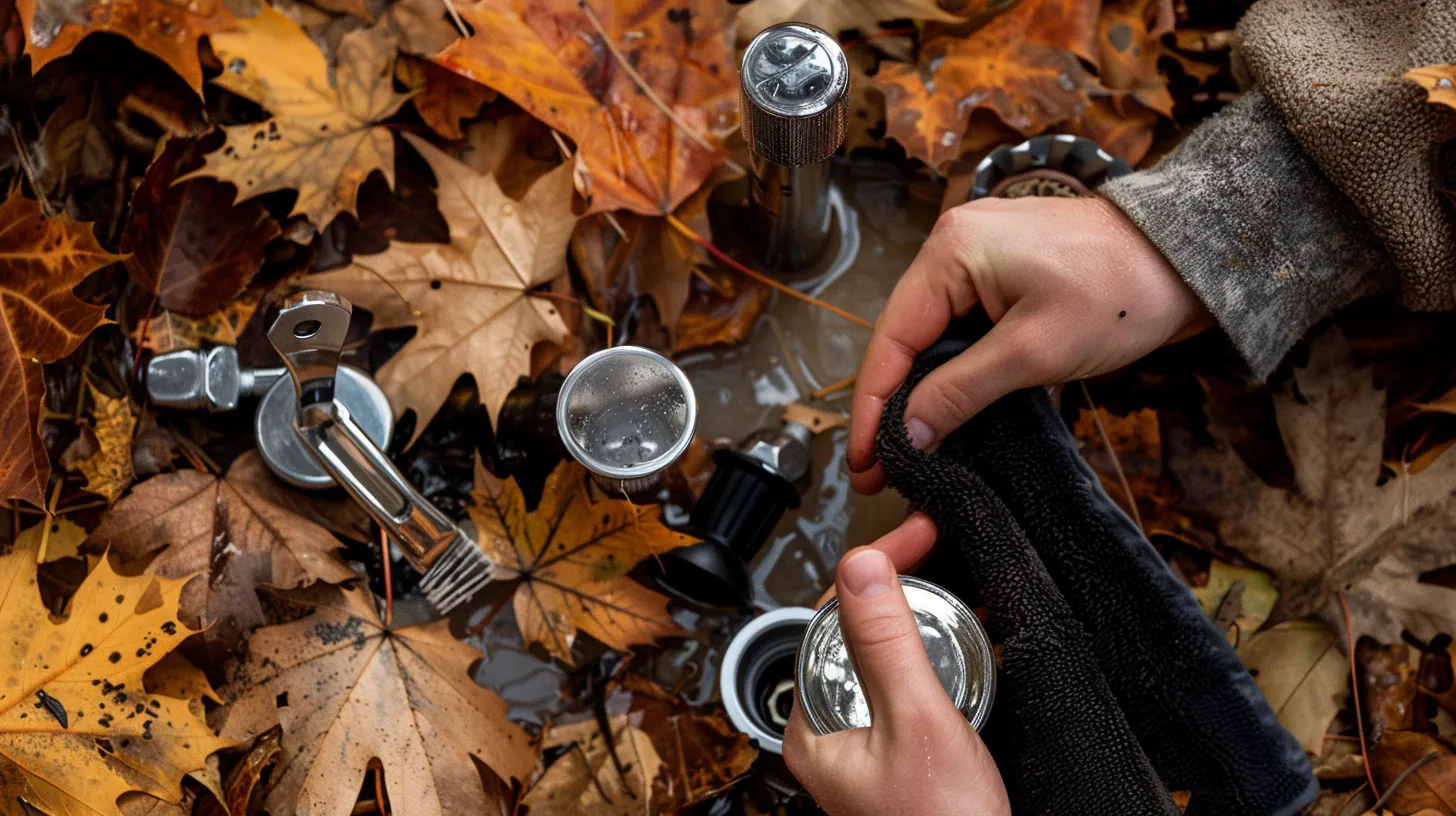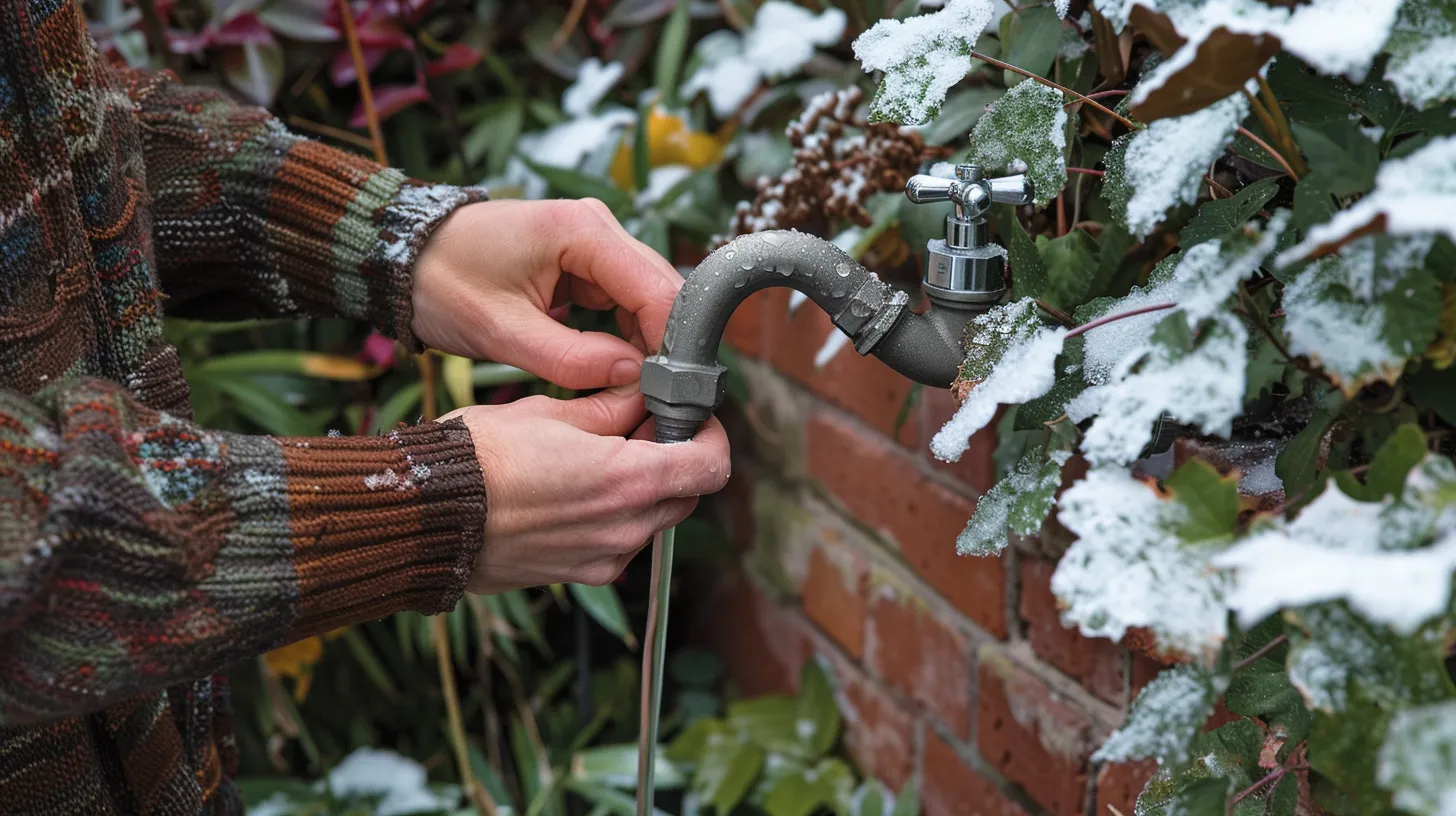As we transition into the colder months, the importance of safeguarding our outdoor plumbing becomes paramount to prevent costly damages.
A fundamental step in this preparation is the proper installation of an outdoor faucet cover, yet many homeowners overlook the nuances that ensure its effectiveness. The process begins with selecting the appropriate cover and extends beyond merely placing it over the faucet.
The intricacies involved in securing the cover effectively to eliminate any exposure to freezing temperatures are often underestimated. By understanding these critical steps, homeowners can ensure their outdoor faucets are adequately protected, but the question remains: are all steps being followed to the letter, or are there overlooked details that could lead to failure?
Choose the Right Cover

Selecting the appropriate outdoor faucet cover is crucial, as it ensures both the durability and the effectiveness of protection against harsh weather conditions. Cover selection involves a careful consideration of size, as a properly fitting cover is essential for optimal insulation. A cover that perfectly matches the size of your outdoor spigot will prevent cold air from entering and heat from escaping, thereby reducing the risk of freezing during the winter months.
Furthermore, the choice of weather-resistant materials cannot be overstated in its importance for long-term durability. Materials that can withstand various environmental elements, such as heavy rain, snow, and extreme temperatures, are vital. Look for covers made from materials known for their durability and resistance to weathering. These materials ensure that the cover remains effective over time, providing reliable protection season after season.
Additionally, features such as a drawstring or buckle closure contribute to a secure fit, further enhancing the cover's protective capabilities. Such closures prevent the cover from being blown away by strong winds, ensuring that your outdoor faucet remains insulated and protected. By prioritizing these key factors in cover selection, homeowners can ensure their outdoor faucets are well-protected against the elements.
Prepare the Faucet

Having chosen the right outdoor faucet cover, the next crucial step is to properly prepare the faucet itself for the installation process. This preparation is essential to maximize the effectiveness of the insulating materials used in the faucet cover, providing the best possible winter protection for your outdoor plumbing.
Start by shutting off the water supply to the outdoor faucet to prevent any leaks and ensure safety during the installation. This is a critical step, as it also allows for the draining of any remaining water in the faucet, which is necessary to avoid freezing and potential damage.
Once the water supply is shut off, turn on the faucet to let any trapped water flow out until it stops. This step ensures that no water is left in the pipes that could freeze and expand, causing damage.
Next, thoroughly clean the exterior of the faucet to remove any dirt or debris. This cleaning is vital for the cover to fit properly and provide adequate insulation. Ensure the faucet is completely dry before proceeding to avoid the risk of mold or mildew growth under the cover.
Lastly, inspect the condition of the faucet cover itself to ensure it is intact and capable of offering the necessary insulation and winter protection for your outdoor faucet.
Position the Cover

After properly preparing the outdoor faucet, it is crucial to correctly position the faucet cover for optimal insulation. Proper positioning entails placing the faucet cover over the outdoor spigot in such a manner that it completely envelopes the faucet. This step is pivotal to ensuring that the cover extends down to the base of the spigot, thereby providing full insulation. It's essential that the cover fits snugly and securely around the faucet to prevent any gaps or air leakage that could compromise the insulation effectiveness.
Furthermore, the positioning of the cover should be such that it completely shields the faucet from cold weather. This means adjusting the cover to cover any exposed areas thoroughly, ensuring there are no parts of the faucet left vulnerable to freezing temperatures. The goal of proper positioning is not just to cover the faucet but to ensure that the cover insulation is maximized, leaving no room for the cold to penetrate and cause potential damage to the spigot. Checking for any exposed areas and adjusting the cover as needed guarantees that the faucet is fully protected against the elements.
Secure the Cover

Once the faucet cover is correctly positioned over the outdoor spigot, it is essential to secure it firmly to ensure maximum protection against freezing temperatures. This step is critical not only for the immediate safeguarding of your water supply but also as a measure of cover maintenance and winter protection.
After sliding the cover over the spigot so that it fits snugly, the next task is to ensure that the entire spigot is encased without any gaps or exposed areas. This full encasement is vital for providing the proper insulation needed to prevent freeze damage.
To secure the cover in place, tighten the drawstring or strap attached to it. This action should be done carefully to avoid leaving any part of the spigot exposed to the cold. A properly tightened cover will not shift or allow cold air to penetrate, thereby offering reliable winter protection.
Inspect and Maintain
Regular inspection and maintenance of your outdoor faucet cover are crucial steps to ensure it continues to provide optimal protection against freezing temperatures. Before installing the cover, it is important to inspect the outdoor faucet for any existing damage or leaks. These issues could compromise the insulation effectiveness and overall weather protection offered by the cover. Ensuring the faucet cover is the correct size and type for your outdoor spigot is equally essential for proper insulation.
Cleaning the faucet and surrounding area to remove any debris or dirt is a vital step that can significantly affect the cover's effectiveness. Dirt and debris can prevent the cover from fitting securely, reducing its insulation properties. Once the area is clean, position the cover over the outdoor faucet, ensuring it securely fits and covers the entire spigot. This is where the material choice of the faucet cover plays a significant role in its long-term durability.
Secure the cover in place using the drawstring or fastening mechanism to prevent it from coming loose in windy conditions. Regularly maintaining these steps will maximize the insulation effectiveness and long-term durability of your outdoor faucet cover, ensuring robust weather protection throughout the seasons.










